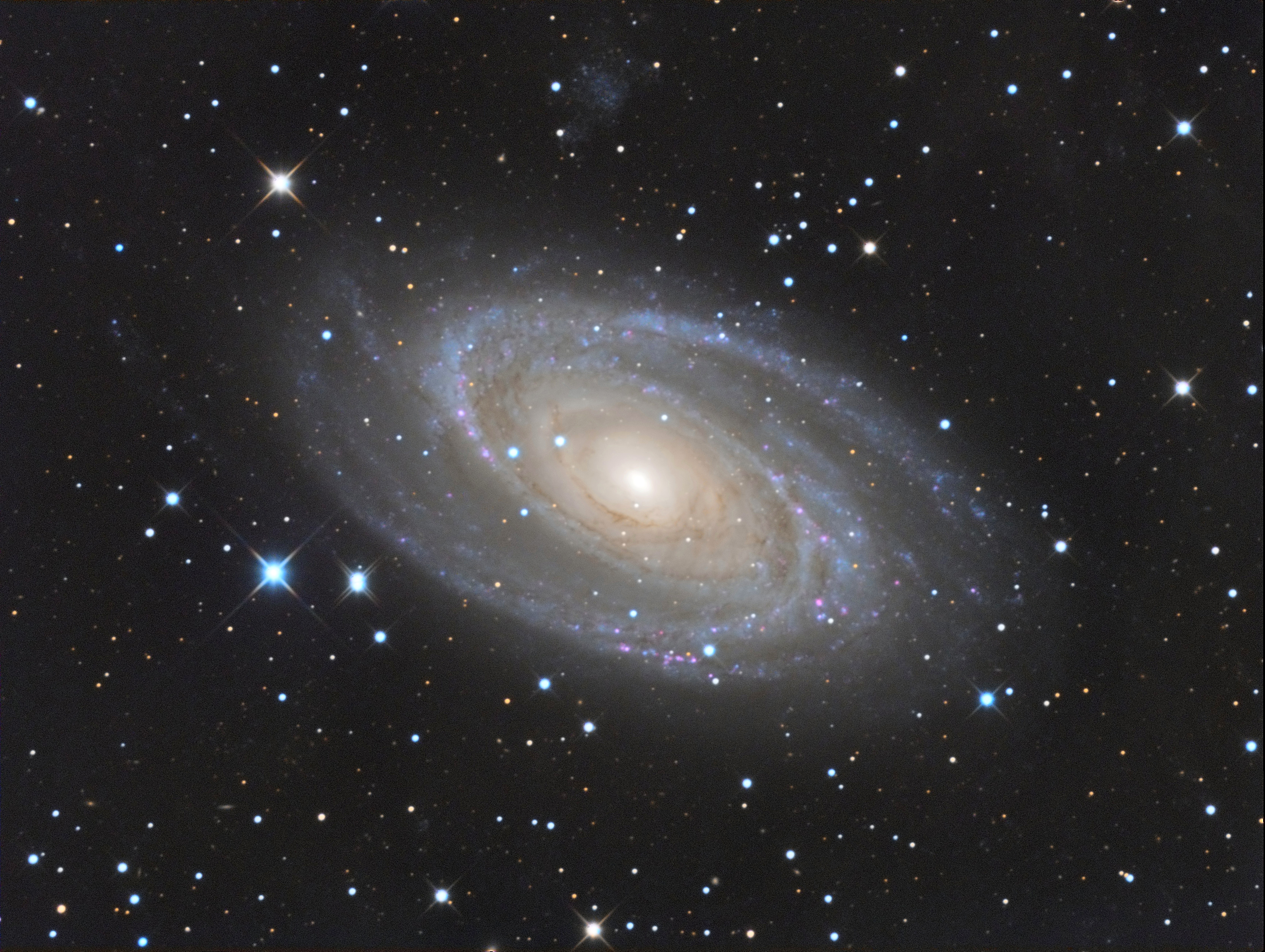Daily Image
30-03-2014Another "amateur" image: Messier 81
| Submitter: | Albert van Duin |
| Description: | Messier 81 was first discovered as a "nebulous patch" by Johann Elert Bode in 1774, hence its alternative name "Bode's Galaxy". In 1779, Pierre Mechain and Charles Messier rediscovered this galaxy, and listed it in the Messier Catalogue as number 81. So far, only one supernova has been detected in Messier 81. This supernova, named SN 1993J, was discovered on March 28, 1993 by F. Garcia in Spain. It was the second brightest supernova seen in the 20th century. The brightest one was SN 1987A in the Large Magellanic Cloud. SN 1993J was also used to determine our distance to M81, it was estimated at 8.5 million light years (2.6 megaparsec) M81 is interacting with two other galaxies, M82 and NGC3077, this process has stripped away gas from all three galaxies. Also due to this interaction, interstellar gas is falling into the centers of M82 and NGC3077, leading to vigorous star formation there. M81 is also important in the history of the WSRT: the observations of the neutral hydrogen of M81 by Rots and Shane (1975) and the following analysis of the spiral arms by Rots and by Visser are one of the success stories of the WSRT of the seventies. 56 integrations of 10 minutes, 10 of 5 minutes and another 10 of 30 seconds were made on five separate nights in December 2013 and January 2014 with a 400mm telescope from Beilen. This High Dynamic Range (HDR) view is a combination of all integrations, the shorter ones fill in the usually overexposed center of this galaxy. Its colors show the different star populations, red/yellow for old stars, and blue for young stars. The pink patches visible in the spiral arms are star forming regions. |
| Copyright: | astropix.nl |
| Tweet |  |
